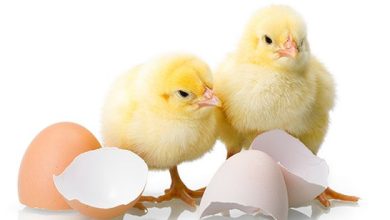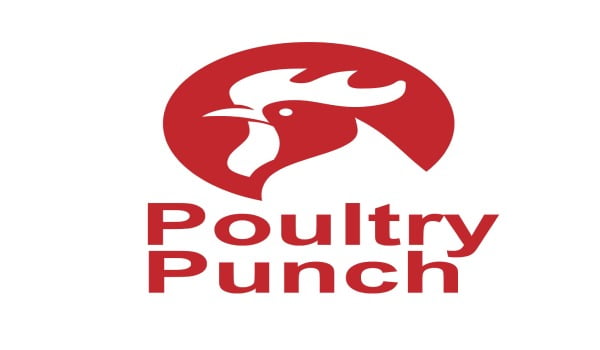BASIC UNDERSTANDING OF VACCINES USED IN POULTRY INDUSTRY

K. Shibi Thomas, V.Jayalalitha and P. N. Richard Jagatheesan
Veterinary University Training and Research Centre,
Tamil Nadu Veterinary and Animal Sciences University (TANUVAS)
7/2, Kozhi Pannai Road, Kottapattu,Trichy – 620 023 Tamil Nadu
Poultry vaccines are widely applied to prevent and control contagious poultry diseases. Their use in poultry production is aimed at avoiding or minimising the emergence of clinical disease at farm level, thus increasing production. Vaccines and vaccination programmes vary broadly in regard to several local factors (e.g. type of production, local pattern of disease, costs and potential losses) and are generally managed by the poultry industry. In the last decade, the financial losses caused by the major epidemic diseases of poultry (avian influenza and Newcastle disease) have been enormous for both the commercial and the public sectors. Thus, vaccination should also be applied in the framework of poultry disease eradication programmes at national or regional levels under the official supervision of public Veterinary Services.
The principle of vaccination against a viral disease is to elicit an immunological response against the virus in a way that does not cause the disease. The simplest way to do this is to take the virus, kill it, and then inject it into the bird. This is an inactivated vaccine. Another approach is to select a naturally occurring virus that is not virulent enough to cause serious disease, and infect the birds with this virus. This is a live vaccine. This latter approach can be taken further by taking a non virulent natural virus and selecting a clone from the virus population with desirable properties, such as lack of vaccinal reactions, or heat tolerance. This is a cloned live vaccine. Recombinant vaccine is to genetically engineer a vaccine by taking part of the genetic material of the virus that codes for a surface antigen, and inserting this into another different virus to produce this type of vaccine.
Vaccines used in poultry industry are of two types (Live vaccines and Inactivated vaccines. The properties of live vaccine shows that only smaller quantity of antigen is only required for vaccination and the response after vaccination relies on multiplication within the bird. This vaccine is easily killed by chemicals and heat. Live vaccines are relatively inexpensive, easy to administer, and can be mass administered through drinking water and spray. Adjuvanting live vaccines is not common. Live vaccines are susceptible to existing antibody present in birds (e.g. maternal immunity). In immune birds, booster vaccination is ineffective. Local immunity is stimulated through live vaccine. Danger of vaccine contamination is common in this type of vaccine. Tissue reactions are possible and frequently visible in a variety of tissues in live vaccines. Relatively limited combinations, due to interference of multiple microbes given at the same time (e.g. IB, ND and LT). Rapid onset of immunity is noted in live vaccine. Live vaccines used in Newcastle disease are derived from asymptomatic enteric or lentogenic mesogenic and velogenic strains.
Thermostable oral pellet vaccine against Newcastle Disease is one of the successful technology developed by Tamil Nadu Veterinary and Animal Sciences University (TANUVAS). This vaccine contains live D58 strain of Newcastle disease virus in pellets made up lactose, starch and amaranthus dye. It can be used as a prophylactic vaccine against Newcastle disease. A bird should take at least one pellet and no harm will take place even bird takes more than the dose. This product is presented as vials containing vaccine granules of 25 doses.
The properties of inactivated vaccine shows that large amount of antigen is required in this type of vaccination. No multiplication of virus is seen after administration and so no tissue reaction is seen at the site of administration. This vaccine is easy to store. The production of this vaccine is expensive and should always be individually administered. Adjuvanted killed vaccines should be frequently used. Inactivated vaccines are more capable of eliciting an immune response in the face of existing antibody. In immune birds, additional immune response is frequently seen in this type of vaccination. Local immunity may be restimulated if used as a booster but secondary response is poor or absent. There is no danger of vaccine contamination. Combination of vaccines is less likely to interfere with the immune system but the onset of immunity is generally slower.
COMMONLY USED ROUTES OF ADMINISTRATION OF VACCINES
- In ovo route of use of vaccination is used in hatchery with live and live cells mediated vaccines. Early protection is given to the birds. Both the innate and adaptive immune responses are stimulated and about 20,000 to 30,000 eggs can be vaccinated per hour. But the difficulties faced are use of expensive equipment, training is needed to the vaccinators and death of embryos due to possible fungal or bacterial contamination due to the hole in the eggs.
- Subcutaneous or intramuscular route of vaccination in the birds with live cell mediated vaccines in the hatchery. Uniform level of immunity is achieved and about 1600 to 2000 chicks can be vaccinated per hour with the absence of respiratory reaction. The constraints faced are regular equipment sanitisation, localised tissue damage and birds are stressed.
- Subcutaneous or intramuscular route of vaccination for the birds in the farm is done with inactivated vaccines. Advantage of this method is no spread of virus, no risk of residual virulence and stable with uniform levels of immunity and low level of adverse reactions.
- Spray vaccination with live vaccines in the hatchery minimises handling, good mucosal immunity and inexpensive. There is possibility of respiratory reaction due to small particle size and the deposition of particle size depends on relative humidity, temperature and hygiene.
- Spray vaccination with live vaccines in the farm creates good mucosal immunity, mass application inexpensive and minimises birds stress. There is possibility of respiratory reaction due to small particle size and the deposition of particle size depends on relative humidity, temperature and hygiene. Possible inconsistencies of vaccine dosage, possible respiratory reaction (in relation to particle size), need to target tissues that stimulate immunity.
- Administration of vaccine through drinking water which is the most common route for live vaccines. It is a labour saving method but at the same time there will be improper and unequal distribution of vaccine, inconsistency and variability of water quality; inactivation by impurities or residues and withdrawal of water before vaccination leads to water starvation in the birds.
- Live vaccine through intraocular and nasal drop is an effective and accurate vaccination and creates uniform and local immunity. But this method is labour intensive as this creates individual handling and we have to be careful that all birds are vaccinated.
- Wing web method of administration of live vaccine may result in 95-100% protection. But this method is labour intensive as it needs individual handling. Every vaccine take has to be checked and there is possibility of contamination at the injection site.
- Subcutaneous or intramuscular route of vaccination in the birds in the farm with inactivated vaccines creates no spread of virus, no risk of residual virulence and stable with uniform levels of immunity and low level of adverse reactions. It may create local infection. It is labour intensive and regular sanitisation of equipment is needed.
ROUTES OF ADMINISTRATION OF VACCINES FOR VARIOUS POULTRY DISEASES
| S.No. | Name of the disease | Route of vaccination | Type of vaccine |
| 1. | Marek’s disease | In ovo at hatchery | Live and live cells mediated vaccines |
| Subcutaneous/Intramuscular at hatchery | Live cell –mediated vaccine | ||
| Subcutaneous/Intramuscular at farm | Inactivated vaccine | ||
| 2. | Infectious bursal disease | In ovo at hatchery | Live and live cells mediated vaccines |
| Intraocular/nasal drop | Live vaccine | ||
| 3. | Infectious bronchitis | Spray at hatchery | Live vaccine |
| Drinking water | Live vaccine | ||
| Spray at farm | Live vaccine | ||
| 4. | Newcastle disease | Spray at hatchery | Live vaccine |
| Drinking water | Live vaccine | ||
| Spray at farm | Live vaccine | ||
| Intraocular/nasal drop | Live vaccine | ||
| Subcutaneous/Intramuscular at farm | Inactivated vaccine | ||
| 5. | Infectious laryngotracheitis | Spray at farm | Live vaccine |
| Intraocular/nasal drop | Live vaccine | ||
| 6. | Fowl pox | Wing web | Live vaccine |
| 7. | Avian encephalomyelitis | Wing web | Live vaccine |
| 8. | Fowl cholera | Wing web | Live vaccine |
| 9. | Avian Influenza | Subcutaneous/Intramuscular at farm | Inactivated vaccine |
| 10. | Salmonellosis | Subcutaneous/Intramuscular at farm | Inactivated vaccine |
| 11. | Coccidiosis | Spray at hatchery | Live vaccine |
CONCLUSION
The inactivated and recombinant vaccines have the advantage of not inducing vaccinal reactions. The heat tolerant clones produce almost no vaccinal reactions whereas the other live vaccines produce slight to moderate reactions, depending on the vaccine strain and the immune status of the population vaccinated. Inactivated vaccines are, however, the most difficult to apply and whether using needle and syringe or automatic equipment, training is necessary before any injection technique is mastered.
For transportability, heat tolerant vaccines appear to be best and can be transported to even remote villages under high ambient temperatures without a cold chain. The inactivated vaccine is second best, having a better heat tolerance than the conventional live vaccines.
Finally, cost is an important factor. All the live vaccines are relatively cheap, and can be even cheaper if they are produced locally. Inactivated vaccines are more expensive and recombinant vaccines are likely to be very expensive when produced commercially.
The choice of vaccine and how to administer it depends not only on the preceding factors, but also on the conditions in each region, such as the structure of Veterinary services, previous experience, the population distribution, the communication infrastructure and the climate



